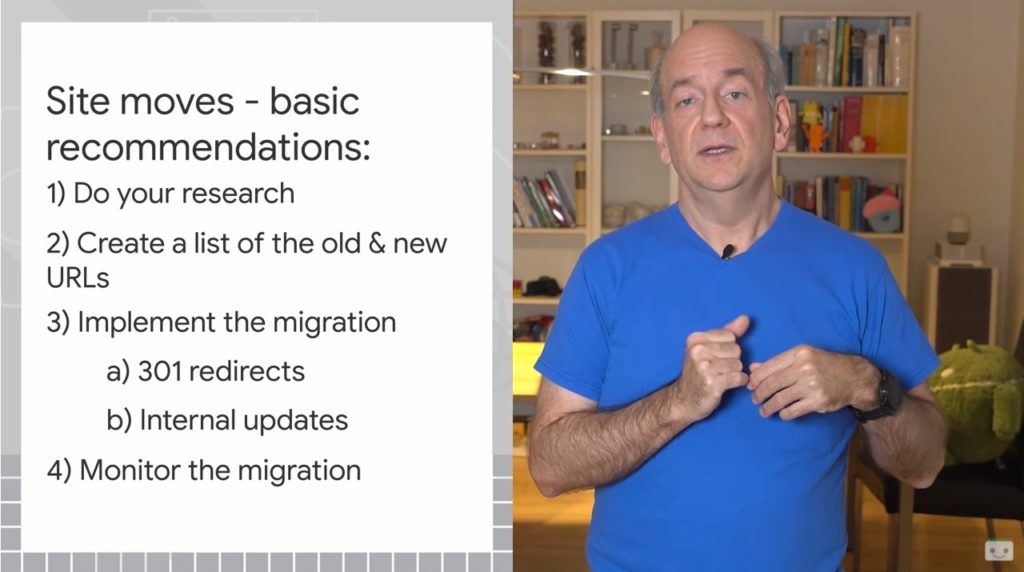Migrations and URL changes, the challenges according to Google
It is probably one of the most delicate processes to face and its consequences can be deleterious, when mistakes are made and crucial details are left out: now it is Google itself to confirm that migration is really a complex task even for search engines, which can take up to several months to process the changes completely.
Migration is complex for Google, as well
Although “at first glance it may seem like a small change within a website, modifying the structure of URLs is not so simple for search engines”: opens with this reflection the new video of #AskGooglebot, in which John Mueller responds to the request of a user who asks information precisely on migrations and, in particular, on the possible risks related to the operation.
The Search Advocate therefore immediately warns about the sensitivity of the process, which even when executed correctly requires a long processing time to the search engines themselves, and which therefore can lead to critical situations, such as feared traffic drops.
The difficulties with site migration
Modifying all the URLs of a site to transfer them to a new domain, and therefore a complete migration, is perhaps one of the most intimidating SEO interventions that can be made, because it affects the whole site – and long ago Google warned us against changing the structure of URLs too lightly.
The reasons for this are various (for example, changing domain names after company mergers or brand changes), but in principle whether we are “completely rebuilding a website or simply removing a slash from the end of URLs” We are still migrating the site, which also requires time and attention to search engines for processing changes.
As Mueller explains, this depends on the very characteristics of search engines like Google that “store their index per page: therefore, by changing the address or URL of a page, your data must be forwarded in some way, otherwise they are lost”. That is to say, all the signals, all the links, all the information that Google has in relation to that URL must be forwarded to the new URL.
Google’s recommendations on website migration
To try to reduce risks and not make mistakes in the migration, the search advocate offers a quick guide to the process with basic guidance to follow.
- Assessing the options and potential effects
Still not believing the false migration myths, which magnify the issue, it is nevertheless true that these site changes can cause disturbances, and it is therefore important to plan the intervention and carefully evaluate the options, the risks and possible consequences in terms of ranking and timing – to decide what is the best timing to expose the site to a potential drop in traffic
- Mapping old and new URLs
Before migrating, it is advisable to keep track of all the Urls of the old site and the new one, to “check the changes later”.
In this way, we can study in advance which are the resources to migrate with a redirect 301, which are to be deleted and so on: after the process is over, then, we will check that all the useful Urls have been transferred and are actually online, and that there are no unexpected answers with 404 status code pages (resource not found).
- Launching the migration
It is time to make the migration.
Google reminds us to correctly implement redirects 301 from old Urls to new ones and not to leave out all the “internal mentions” on the site, such as links, forms, structured data, sitemaps and robots.txt files.
- Monitoring the results of the migration
The last step is the most important one for the SEO destiny of the site: we need to check that all pages have been redirected correctly, using the tools of the Google Search Console.
Times to complete the migration
Mueller’s (short) video also gives us a rough indication of the time it takes for Google to complete a migration of the site: the search engine, in fact, can take up to several months to complete the editing process on all Urls, even if it will prioritize the ones that are important for the site.
In fact, in the Search Console you can see that the most important pages will be analyzed and modified faster, while the others are subject to slower processing to give way to Google’s systems to retry all changes.
Also for this reason, Google recalls that redirects must be kept active for at least a year after the migration.
A complex process that can work well
Migrations are really difficult, as SEOs, site owners, publishers and webmasters who have already experienced these shifts of URLs and domains know. Yet, Google wants to “reassure” us that, with the right amount of preparation, study, research and attention you can successfully complete this task and reduce stress, using all the tools to detect errors in time and monitor the progress of the transfer.


